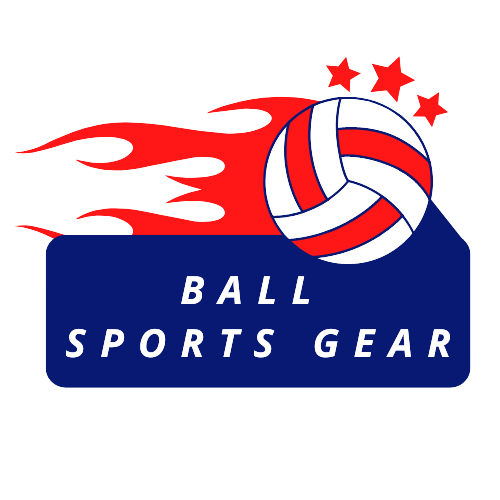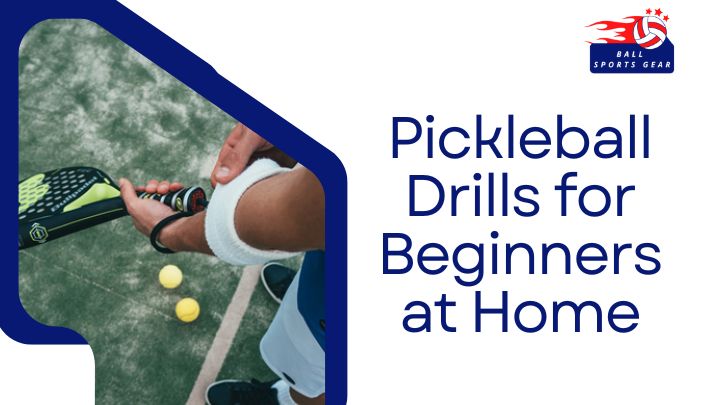A pickleball drill is a specific exercise intended to improve particular pickleball drills for beginners. In any sport, including pickle ball drills are essential, since they help you commit pickleball mechanics to muscle memory. When pickle ball drills players commit to muscle memory, they can react instinctively while using their mental skills to focus on strategy.
In addition, pickle ball drills tournaments, and competitive pickleball are high-speed, stressful activities. Things tend to break down in stressful, high-speed situations, like your pickleball mechanics. As a result, practicing your pickleball mechanics in a non-stressful environment is essential. In other words, DRILL, DRILL, DRILL! It is so important to drill to commit the proper pickleball mechanics to muscle memory and to make your adequate pickleball drills part of your habits.
Basic Pickleball Drills
It is important for pickleball players to be able to use different strokes at different times. With practice, pickleball players should be able to control their speed and placement underhand. As Pickleball Drills for Beginners help You to practice the service alone, which are the only shot that is completely under your control.
Along with the serve return, the returner gains control of the point when he or she returns the serve. The best return of serve against a complex server is high and slow, which helps the returner settle in the baseline’s center and prepare for the point.
It is also possible to attack during the return of serve, depending on the server’s abilities. Before the point even begins, the returner may be able to end it.
The Best 8 Pickleball Drills for Beginners
These drills can help you get better, enjoy Pickleball even more than you do now, and help you reach new heights in your overall pickle ball drills level.
Get To Know Your Paddle
Paddles come in hundreds of styles. According to your play style, you will choose the best paddle. You may want a soft-playing paddle that adds control if you generate enough power. Another option is to choose a paddle that enhances your strength. Control players, on the other hand, may prefer paddles that hit hard and help them put the ball away.
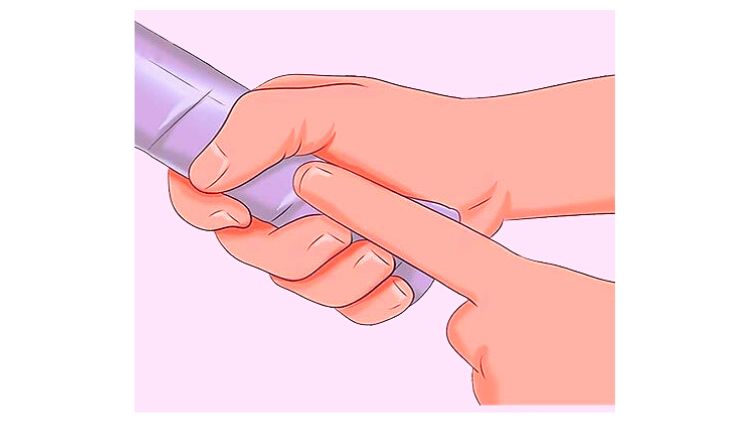
Alternatively, you might want a paddle that gives you great control so you can place your shot precisely where you want it. In the end, all paddles have power and control elements, and our paddle guide is intended to assist you in finding the right combination for your game style.
Selfie Ball Bounce
The selfie ball bounce is a solo Pickleball Drills for Beginners to develop the fundamentals of Pickleball: ball control, hand-eye coordination, and reaction time. There are two variations of these drills for pickleball players to try: the accessible and advanced versions.
Accessible version: The easy version of this drill involves hitting the ball up with the top face of the pickleball paddle. You then let it fall past you to bounce before scooping it into the air again and repeating. This drill version is slightly more accessible because it gives you more reaction time. However, it still develops the ability to hit dinks and lobs.
Advanced version: For advanced players, the second version of this drill uses the bottom side of the paddle and involves hitting the ball down into the ground. Imagine bouncing a basketball with your hand, but instead of a basketball, you use a paddle and drills for pickleball. This version of the selfie ball bounce tests your hand-eye coordination and reaction time. The ball is fast, and you only have a little time to set yourself between shots. The advanced selfie ball bounce can be an excellent quick warm-up before a pickleball skills game.
Serve Repeats
Serve repeat is a drill that helps take your serving to the next level. Grab a bucket of balls, and set up on a pickleball court. Attempt to serve to the same spot repeatedly—aim close to the baseline at the back third of the service box.
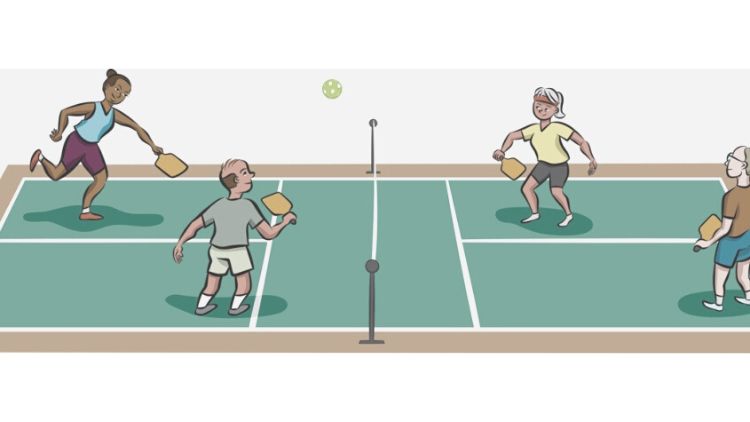
Repeating your services over and over will ingrain the action into your muscle memory when the pressure is on. You can switch up this drill by aiming for different points on the baseline. Try practicing serving deep and to your opponent’s backhand. This is often the most rigid serve to return.
Half-Court Dinking
The half-court dinking drill is an excellent way for pickleball drills for two players to improve their dink shots. Because this drill only focuses on the dink shot, you don’t have to worry about your serve, your return of serve, or your third shot drop. You can focus just on your dinks.
This drill is played on half of a court by one player (player A) and another player (player B) on opposite sides of the court. There are just a few feet between both players and the non-volley line.
A player dinks the ball over the net to player B to begin the drill. Four pickleball players can play this drill, two hitting the ball directly across the court on each side of the net.
Your focus should be catching the ball over the net into the non-volley zone since you’re only drinking. The goal is to practice hitting softballs with control. Balls that travel outside the sidelines, baselines, or centerlines of the half of the court are out. Similarly, hitting in the non-volley zone is subject to the same rules.
Cross-Court Dinks
It’s simple in concept but needs to be in execution. The cross-court dink can take a lot of work to get used to. It is possible to perform a cross-court dink in a variety of ways. Other options include underhanded and backhanded. Cross-court dinks are typically done underhanded when facing the opponent. As you face your opponent across the court, you can simultaneously see the ball, the opponent, and the net.
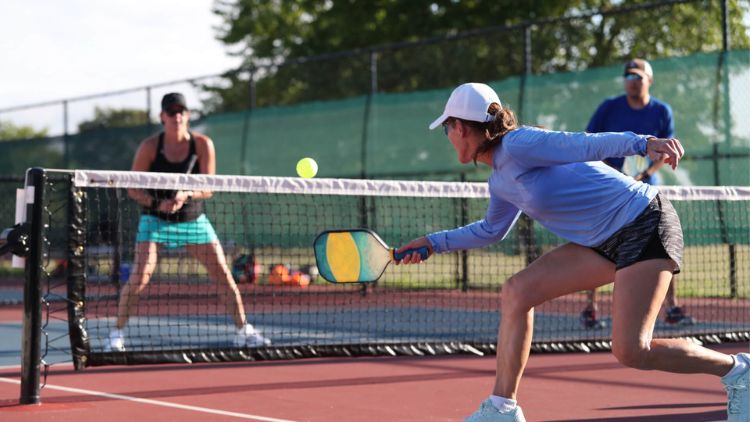
But this can break down quickly if your opponent makes an excellent cross-court dink that hits your kitchen sideline. When that happens, you will need to make a semi-blind shot without being able to see the goal. This takes practice.
You should aim to land the ball as close to the opponent’s sideline and net as possible when hitting these dinks. Target these spots if you want to succeed. Your opponent will have more chances to drive the ball back at your partner the higher you hit it!
Triangle Dinks
Practicing straightaway dinks and moving your opponent around are the main objectives. In this drill, we will hit three landing spots successively in a triangular pattern. There is no need for perfection. Using the surrounding area is fine.
With this drill, you can do it so easily and quickly! A drill like this can be easily incorporated into a drill or warm-up session before an open game. In addition to practicing straightaway dinks, it moves the opponent around.
Three landing spots in a triangular pattern will be hit successively in this drill. There is no need for perfection. Using the surrounding area is fine. You want to avoid hitting the same spot twice. Immediately following a left-handed strike, the next dink should not be on that side.
Pickleball Solo Wall Drills
It’s well known to pickleball players that drilling is important – that you must work repetitively on one aspect of your game and commit the correct technique to muscle memory so you can call it confidently in an actual match.
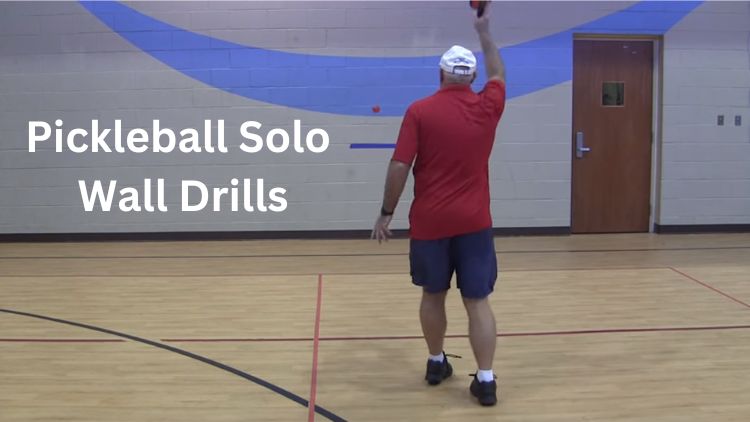
It can be challenging in and of itself to find a place to drill and someone to drill with. As a matter of fact, the success of a drilling session is typically determined by the weather, partner availability, and the availability of a similarly skilled partner, and, of course, the requirement of self-distancing in 2020.
In addition to wall drills that you can perform on your own, there are a few drills that you can incorporate into your practice sessions. You won’t even need much space or a wall.
Fast Hands at the Net – Pickleball Volley Wall Drill
Just like in boxing, the hand position is crucial in Pickleball. You only have time to readjust and re-grip in the kitchen if you enjoy getting tattooed in the face. Fix your paddle at 11 o’clock if you’re right-handed or 1 o’clock if you’re a lefty, and you’re in the best position to return balls drilled at your forehand or backhand. And if your opponent keeps aiming for your right shoulder or right hip (or left shoulder and hip if you’re left-handed), cheat more to your backhand and make it harder for them to hit you where they want.
Pickleball Exercises That Help With Drills
Reflex Training
By practicing this reflex drill, you will improve how fast you respond and how well you hit the ball. In the non-volley zone, you and your partner dink back and forth with controlled shots. Then surprise your partner with a hard drive. They should block the ball with their paddle.
This drill will help train your reflexes and help you practice blocking shots with control. One of the critical pickleball skills needed when playing Pickleball is quick reflexes. It means that you must be able to respond quickly to a ball.
Figure 8
This drill is excellent for getting your heart rate up and improving your footwork. You’ll need two cones or any other item you can line up on the ground with about three feet between them.
You can also tape two X’s on the ground with tape. Move around the court in figure 8. Take it slow at first, and gradually increase speed until you reach a manageable speed, and you can maintain foot control.
FAQs
The top 9 pickleball skills you need specifically for doubles to be a force on the court are #1 – Dinking and Dink Volleys. #2 – Attacking from the non-volley zone line. #3 – Resetting & Blocking from the non-volley zone line & mid-court.
The third thing is return observe with a punch forward return observe and the last extenuating. You can volley a ball in the air if you get the return back over the neck deep.
Let’s start with the static drop beats first, okay, so I have a basket of balls in the corner. And I’m right here at the baseline. And what I’m going to do is work on my forehand.
In Pickleball, one of the most difficult things is to keep the pickleball low (while still over the net). Your opponents will be unable to go on the offensive with aggressive shots when you play a low pickleball.
Conclusion
Hopefully, you have lots of people to play Pickleball with. But only some people are down for a good practice session. But you know better. If you want to improve your game, it’s all about practice. So get out there and hit some of these pickleball drills at home. And soon, your opponents won’t know what hit them. After this few drill you leveling up your game with Pickleball Drills for Beginners.
